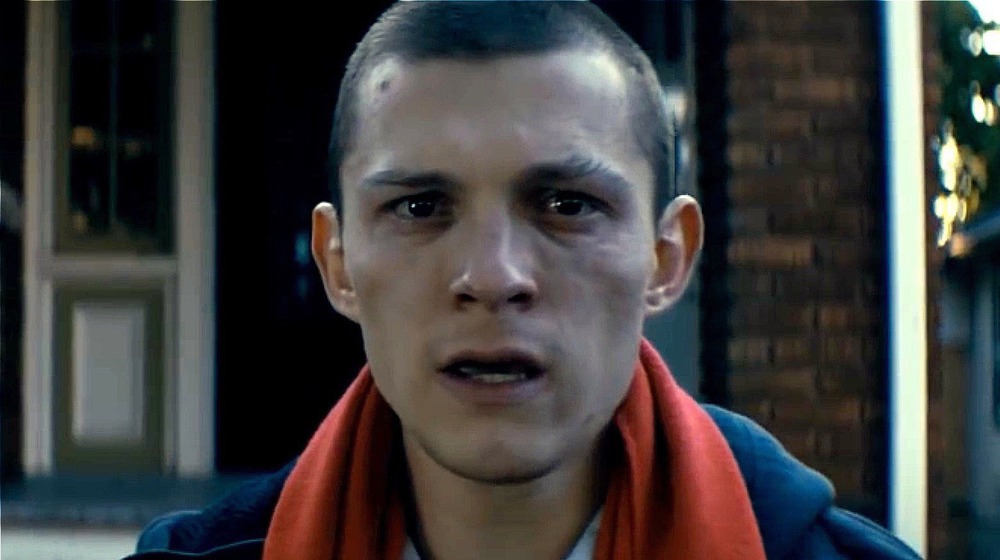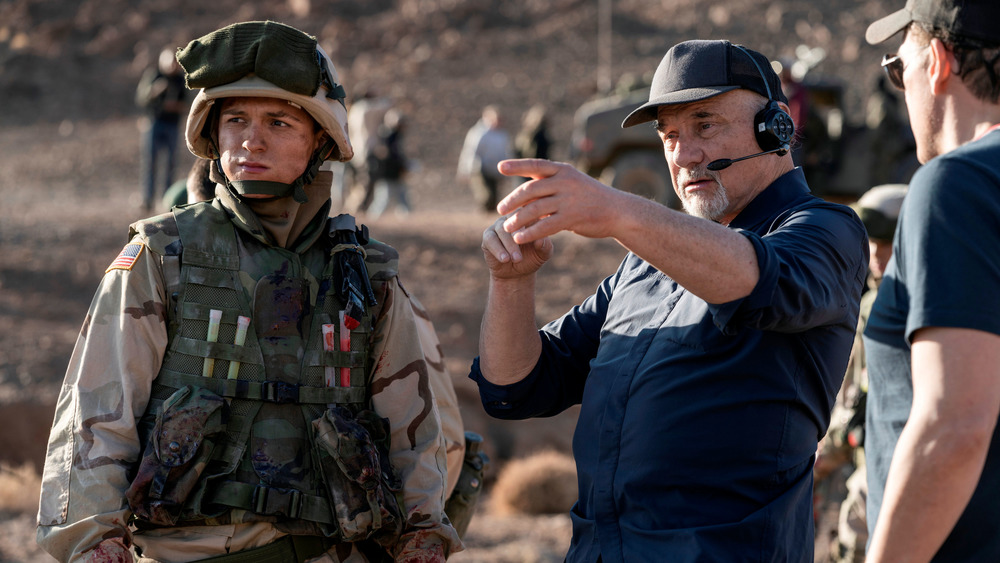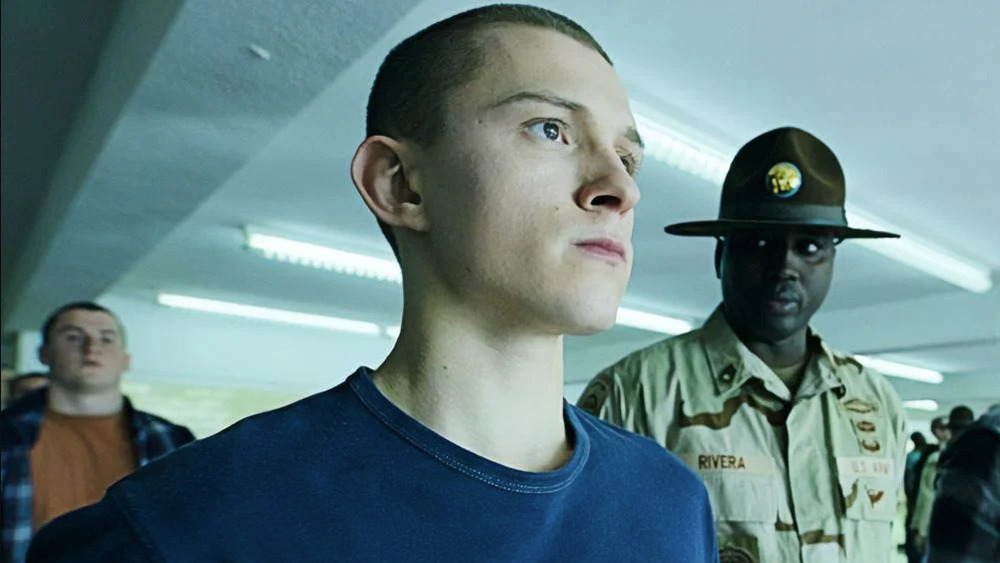The Real Reason Cherry Looks So Different In The Basic Training Scenes - Exclusive
The 2021 film Cherry, which explores its title character's descent into opioid addiction after serving in the Iraq War and is based on Nico Walker's 2018 novel of the same name, has plenty of big names on its creative roster. It stars Tom Holland, best known for playing Spider-Man in the Marvel Cinematic Universe, and it's directed by Joe and Anthony Russo, who recently brought home the biggest multi-film arc in cinematic history with Avengers: Endgame.
If you're going by résumé alone, however, the most venerated person involved in Cherry might have been the guy shooting it. His name is Newton Thomas Sigel, and he's been directing photography on feature films since the late '80s. He's worked as a cinematographer on projects as diverse as the crime thriller The Usual Suspects, the satirical war drama Three Kings, multiple X-Men films, and the stylish neo-noir flick Drive.
With Cherry, Sigel and the Russos adopted a unique visual approach inspired by the source novel's chapter-based structure, adopting differing styles depending on the viewer's place in the title character's journey. One key milestone therein is Cherry's enrollment in the armed forces and his trip through basic training. For Sigel, this was a key chance to create a very particular look and feel to his shots.
Looper recently spoke with Sigel to get his breakdown of how Cherry's basic training scenes were brought to life.
Finding the serious absurdism in Cherry's basic training
For Sigel, two key elements drove how he wanted Cherry's story to be visually told post-basic training: the seriousness of committing to military life, and the absurdity that comes along with it. Developing that vibe was a collaborative effort between cinematographer and directors.
"We talked about basic training. For [the Russos], they always thought that basic training was a section [of the movie] that they called 'absurdism,' that there was a kind of absurdity to it," Sigel said. "And so for me, it was how to bring that about, but [also] understand the severity of the decision that he made [by] joining the army, understand the fact that even though he finds out that Emily, his love, is not leaving him or is not leaving Cleveland and he didn't have to join the army, it's too late. He's made the choice, and he's boxed in."
Sigel conveyed that confined feeling through the use of a tighter aspect ratio that brings events more squarely into Cherry's — and the viewer's — field of view.
"This decision, instead of letting him be this slightly more passive traveler of life that he is when we meet him in the opening of the movie [...] the military and being in the army is going to put that situation right in his face," explained Sigel. "We moved in the aspect ratio. We moved it in to a 1.66:1, a more square aspect ratio than in the rest of the movie. You can't walk away from it. You can't blink, you can't decide you're not going to do it. We chose to do it all with one lens, all the same focal length, a very wide lens. And by using that lens, it almost demands that you're very, very close to the actors."
Newton Thomas Sigel on collaborating with the Russo brothers for Cherry
The Russo brothers have recently worked on some of the most visually dazzling movies in modern memory, so it's no surprise that they'd have ideas about how Cherry should look. According to Sigel, though, the collaborative nature of the effort to give the film's basic training section its distinctive appearance was just one example of their willingness to work together.
"That was very rewarding," Sigel said. "I learned early on that one of the great things about the clarity of their vision was that when you did throw out an idea, you'd get a response and you'd know very early whether it was a direction you were going to go or not."
This gave Sigel the ability to offer up bold ideas like the change in aspect ratio that accompanied the basic training sequences.
"I always wanted to be clear and confident in the ideas that I put out to them, because I knew that if it clicked, it was going to be in the movie. And so, as you put out your riskier, more outrageous ideas and you see the response, that kind of gives you a guide as to [whether] we're moving in the right direction or not," he told Looper. "I think every movie has to find its voice, and no matter how much you think it's all there in the screenplay, the minute you start putting images and sounds to those ideas, the film very often takes on a whole new life, a whole new voice."
For those keen to see the cinematic results of Sigel's creative collaboration with the Russos, Cherry is in select theaters now, and will make its debut on Apple TV+ on Friday, March 12.


